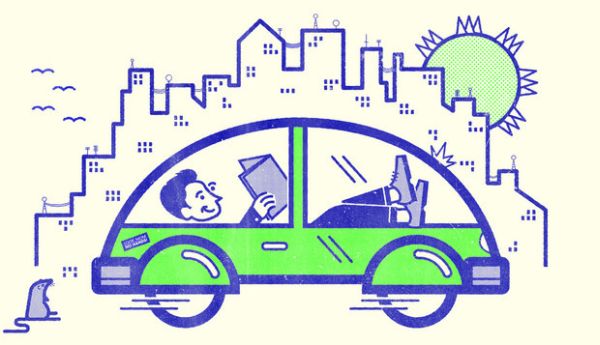Published on the 11/11/2014 | Written by Newsdesk

Within two decades driverless vehicles could become a significant feature on Australian and New Zealand roads – if Governments invest in supporting technical infrastructure and update road rules…
The smartphone has delivered the greatest change in consumer transport to date according to Dr Charles Karl, national technical leader at transport specialist the ARRB Group, delivering immediate insights about traffic flow and congestion. But he says that is only the tip of the iceberg in terms of what is possible in the future.
Governments and private infrastructure companies are already investing in technologies that allow improved understanding of traffic flows around the nations’ roadways, rolling out sensors, traffic cameras and information systems that allow finer grained control of traffic particularly in CBD or metropolitan areas. If that infrastructure was boosted with even more road-side sensors it could support the rollout of driverless vehicles helping to reduce crash-rates, cut insurance premiums and also deliver environmental benefits.
The cost of such infrastructure has been estimated at $8-10 billion for Australia, but even without wholesale sensor deployment Karl believes that Australia should invest in trials of driverless vehicles to better understand the infrastructure that will be required to support their widespread deployment. In New Zealand transport minister Simon Bridges has recently signalled a review of the law in order to allow testing of driverless cars on public roads.
Companies such as Google, Audi, Ford, Volvo and Mercedes are all working on driverless car technology today, using GPS-enabled sensors coupled with smart software to guide cars with minimal driver intervention. But to achieve their fullest potential such vehicles rely on access to an information web built from real-time feeds of data from roadside sensors.
Karl believes that with appropriate investment the change wrought on driving by sensors could match the impact of the smartphone in a similar timeframe. Not everyone is quite so optimistic; earlier this year analyst IHS Automotive released a report suggesting that only about one in 100 cars sold in 2025 will be driverless, rising to around nine percent a decade later.
While completely driverless cars may take a while to become commonplace, elements of the technology – such as automated park assist – are already widespread in new vehicles. And Karl is optimistic that freight companies will start to deploy connected vehicle systems such as adaptive cruise control in trucks that will allow them to be formed into “platoons” moving in concert along major arterial roads in order to increase efficiency and decrease the chance of accidents; while sensor-controlled buses in CBDs would also deliver significant benefits he says.
Ian Webb, the CEO of Roads Australia, is a fan of driverless vehicle technology but believes that car companies have yet to grasp the prospect of their business model being entirely blown apart by such technologies. He says that the driverless car would “do away with the need to own a car” instead allowing cloud style car-as-a-service where consumers summoned a car to take them to a destination and paid accordingly.
Webb said that the industry’s current focus was not on driverless cars, rather on connected vehicles delivering some if not all the benefits technology could generate for the sector.



























